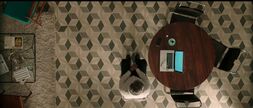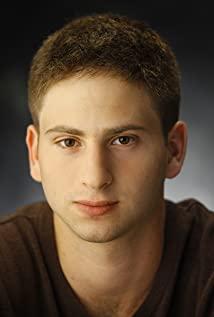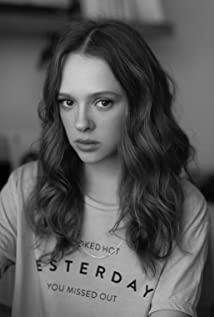There are many movies on the theme of "Fate", and most of them start with narrative structure.
The most common is the structure of " multi-line parallel narrative ".
For example: "Two Smoking Guns", "11:14", "Crazy Stone", and several domestic films in recent years, "The Situation is Bad", "The Heart Labyrinth", and "The Pursuit"...
Such films usually have several parallel branches, which are equivalent to telling the same story from the perspective of different characters.
And the theme of fate is achieved by creating "information asymmetry" between the characters of each branch.
It is equivalent to putting the audience in the perspective of "all-knowing" God, watching and pondering the "ignorance" of the people in the play, and finally giving birth to a feeling of "oh, this is life".
Another structure is also very common, that is, the " repeat through structure ".
Representative films include: "Groundhog Day", "Death is Coming", "Terrorist Cruise", "Butterfly Effect", "Time and Space Love Traveler"...
The protagonists of such films often have the super power of "traveling back to the past".
They hope to change the past to solve the current predicament.
But the end is often: they find that fate is difficult to change, or even worse, so they give up their superpowers and accept their fate calmly.
The film "Foxtrot" we are going to talk about today also expresses the theme of fate through "structural design", but it is different from the above two types.
To sum up its plot in one sentence: Jonathan, a young soldier, is rumored to have died in battle, but in fact he is still alive, but in the end, he still died.
The whole film tells such a ridiculous story.
Fake death, real life, fake life, real death... Jonathan slipped out an elegant dance step and responded to the "rumour of death" with "real death".
As a result, the funeral, which had been cancelled, was held as scheduled; the parents, who had turned their worries into joy, fell into the abyss again.
The ending of the story is just a repeat of the beginning of the story, and everything goes back to where it started.
Yes, this "return to the origin" structure is the core of "Foxtrot".
Just as the protagonists in the film keep repeating the dance: forward, left, backward, right; forward, left, backward, right... No matter how they dance, they will eventually return to the starting point.
They just kept drawing circles, thinking that they were in control of everything, but in reality they were pulled by a pair of invisible hands to complete the predetermined actions.
These invisible hands have another name - Fate .
Director Samuel Maoz is actually using the entire movie to dance a dance of fate.
This circular structure of "returning to the origin" is ubiquitous in the film.
The most obvious is that the film is filled with a large number of " circular props ", which confirm the theme of this structure in the most intuitive form.
For example: round tables, coffee cups, circular mirrors in the living room, arched corridors, telescopes and circular views of the territory, the flight paths of flocks of birds, cans, beer cans, cakes of the dead...
These props are either very eye-catching in color, poking eyeballs; or they play an important role in narrative and become accomplices of fate...
Secondly, the director used the transformation of the film space to complete this fateful dance.
The film has a total of five paragraphs, two small paragraphs before and after, plus three main paragraphs, which are five spaces.
The entire space is transformed, starting from the “shot of the car driving in the desert”, and then into the main paragraph, first to “Mike and Mrs. Home”, then to the “post in the desert” where son Jonathan is located, and then back to “Mike and Mrs. home", and finally back to the "paragraph of desert driving".
Five steps, five spaces, and finally return to the fateful road at the beginning of the film, and reveal the ending of the story.
And in terms of space modeling, the cramped and oppressive home of Mike and his wife just formed a clear counterpoint to the vastness and unknownness of the desert.
It symbolizes that the protagonist cannot break through the predicament, and will eventually return to the fateful rut, waiting for the judgment of fate.
Finally, and the most important point: the narrative logic of the whole film also follows the structure of "returning to the origin".
If you look closely, you will find that every character in the film is actually dancing.
My father, Mike, danced the " out of control " dance.
What caused him to lose control was the resurrection of his son.
The officers brought news of his son's death, and Mike went from restraint to despair, and gradually accepted the reality. But suddenly, things were reversed: the son was not dead, but another soldier with the same name.
The huge gap from grief to ecstasy made Mike completely out of control. Despite the dissuasion, he insisted on asking his son to go home immediately.
I don't want my son, but he was in an accident on the way home and died in a car accident.
This is indeed the most fatal of all tragedies. A person, trying to avoid a catastrophe, in the end it was his efforts that led to the catastrophe.
Mike came out of despair, returned to despair, and had to accept his son's death once again.
The son, Jonathan, dances the " unbalanced " dance.
His barracks in the desert slanted to one side because of the deep silt. It indicates that the lives of the soldiers are in an extremely unstable state and may collapse at any time.
The daily life of these soldiers is extremely boring, guarding roadblocks all day, checking passing vehicles, and releasing camels.
But the more silent the air, the more dangerous it is.
The tense nerves of the soldiers are waiting for the opportunity to find the exit of all outbreaks.
Finally, because of an unprovoked misunderstanding, Jonathan accidentally shot and killed several civilians. Things were quickly covered up by the military, and everything returned to calm. In the end, Jonathan died in an accident on his way home.
What a bizarre dance step: first it was mistaken for death, but not only did he not die, but he also killed people. Although he didn't pay for it, he still lost his life in an extremely accidental accident.
What happened to Jonathan is the absurdity of the battlefield and the absurdity of life.
My mother, Daphna, danced the " lost " dance.
When officers brought news of her son's death, the mother collapsed on the ground. When she woke up, she thought she had escaped the pain of losing her son, but she was destined to lose her son in the end.
In fact, Daphna's dance started as early as 20 years ago.
At that time, Daphna was just pregnant and not ready to have a baby, and if it wasn't for Mike's persistent insistence, she wouldn't even have given birth to Jonathan.
In the end, fate left the baby, but took away a 20-year-old youth. It was 20 years late, and Daphna's dance steps were finally completed.
Daphna said: "The joy of having a baby is temporary, but the pain of losing him will never go away."
So far, the solo dances of the three protagonists have all been completed.
Do you think this is over?
of course not.
Once the tragedy begins, it will not stop.
This dance of fate is not just an eight-beat, but it will continue to dance, circle after circle.
Like father Mike, who stole the family's precious Hebrew Bible as a child and exchanged it for a pornographic magazine, causing his mother's breakdown to go mad.
It became the scar of his life.
When he grew up, he became an officer. During a march, he let the brothers behind him go first, but he encountered a landmine and suffered heavy casualties.
Did he do it on purpose? Or is it a joke of fate?
No one can tell.
Soon after, his wife became pregnant, and Mike's life rekindled hope.
He felt that this newborn was God's chance for redemption. So he persuaded his wife and gave birth to a child.
How did it end? After going around for twenty years, he still indirectly killed his own son.
See it.
Fate is so ruthless.
Whether he did bad things intentionally or unintentionally, or even made an active effort, he never jumped out of that paradoxical circle.
The purpose of the foxtrot is to dance endlessly. Taking steps again and again, returning to the same place again and again, and heading to a new destiny again and again.
This dance of fate will continue to be passed down and danced by generations.
Just like the pornographic magazine that was exchanged for the Hebrew Bible, it will still be passed down as a commemoration of my son's enlistment in the army;
Just like the page of truth recorded by Jonathan in the comics, it has been torn off by an unwitting mother and pasted on the refrigerator in the living room, becoming a permanent scar on the family;
It's like Mike and Daphna mutilating themselves from the loss of a child, leaving scars on the backs of their hands. One was left by his son's fake death, and the other was left after his son's real death. They are like a pair of imprints, inscribed with the absurdity of the world.
The wheel of fate never stops.
At the end of the film, Mike danced sadly in front of the camera: forward, left, backward, right; forward, left, backward, right...
Daphna stood up and joined him in the dance.
The two danced in an embrace, with their scarred hands folded together.
At that moment, I seemed to see the invisible thread hanging over their heads.
It was not the rope that saved them from hell, but the thread that steered their destiny.
Manipulated by whom?
Don't know, or don't exist, it's just a completely random and unpredictable force.
And the only thing we can do is: hug what you can, and dance.
View more about Foxtrot reviews











